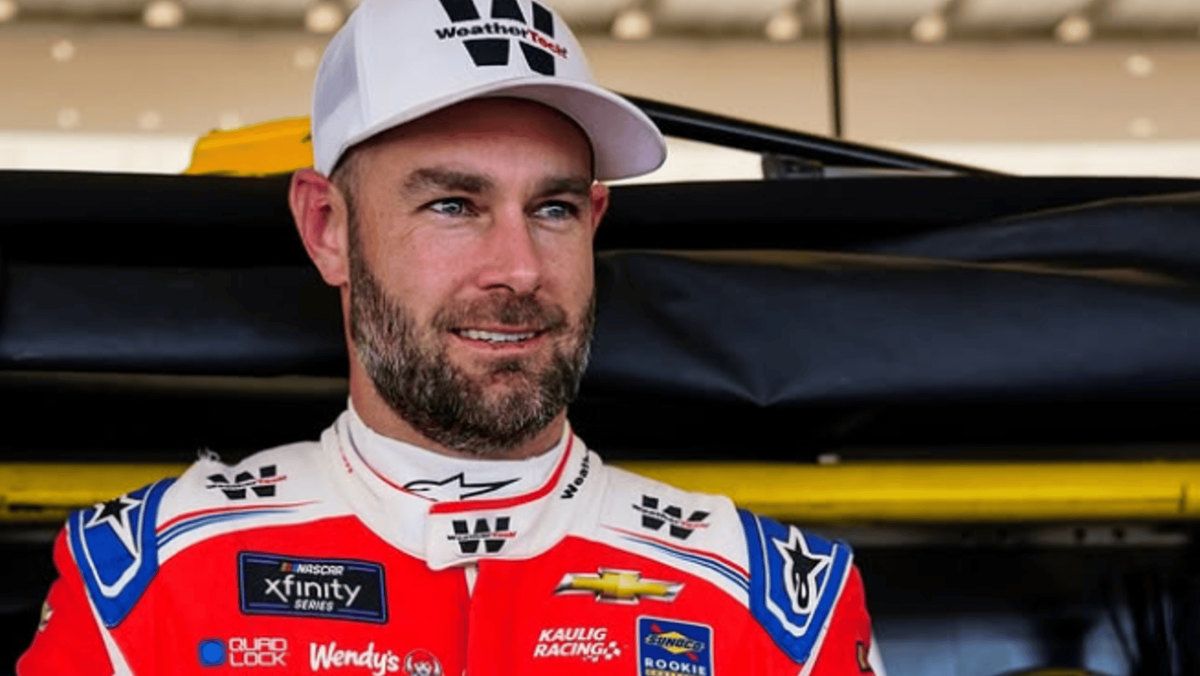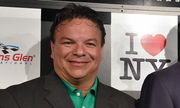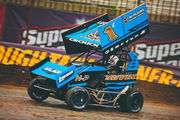

Shane van Gisbergen’s 2025 season has read like a legendary story to be followed by younger generation fans of the sport. He swept the Chicago weekend, won the inaugural Viva Mexico 250 at high altitude, and added a commanding victory at Sonoma, where he led 97 of 110 laps. These are milestones that have vaulted him into elite company in remarkably few starts. Those results aren’t just ceremonial; they are a statistical thunder of 3 poles, 3 wins, 4 top 10s, 3 top-5s, and a streak that turned every road-course trip into a psychology game for rivals. His dominance drew attention, and other drivers have been candid about what they have seen.
Watch What’s Trending Now!
Across the paddock, established stars have openly acknowledged his threat. Denny Hamlin flagged him as a timing-and-scoring standout and said, “He‘s got the potential to be the fastest. I heard during the (Cup) test for Chevrolet (at Sonoma) he was running ridiculously fast times. So I don’t think it’s ever been a question whether he’s going to be one of the best on road courses.” While Kyle Larson warned that if SVG cracks the oval code, he could be utterly dominant, and wondered if SVG “thinks we all suck or if we could actually compete, if we weren‘t really that bad.” Still, one driver sees a gap as wide as the headlines suggest, calling it a failure of NASCAR drivers to be at the same level as SVG, declaring, “Everything’s just details and execution.” And he is Michael McDowell.
ADVERTISEMENT
Michael McDowell points to mental game over machine learning
In a pre-race interview before the “Go Bowling at the Glen” Cup race at Watkins Glen, Michael McDowell insightfully remarked to the reporter’s question, who asked, “We see what Shane has done winning the last three road courses. Why is it that somebody like him can be at times that dominant and have that much success when everybody has the opportunity to look at all the data from him…” On paper, sharing telemetry data should level the field, where teams can study braking points, throttle application, and line choice from top performers. Yet, this phenomenon echoes observations in real-world analytics, where entailed metrics, like power output or ideal weight load, don’t translate into winning performances unless a driver’s muscle memory and setup feel aligned.
McDowell delved deeper into the question. “I would relate to this just because on social media or Instagram, you see somebody working out and lifting weights,” said McDowell. “It doesn’t mean that you know how to get fit. It’s kind of the same thing with data… your muscle memory and having the car set up in the field and all the uniqueness to a driving style.” This analogy rings especially true in racing, where mimicking braking charts or line visuals doesn’t instill a feel. He also lauded Denny Hamlin’s tire management edge born from experience rather than analytics, “The guys that talk about that were Denny and those guys that had a clear advantage in the old car and short tracks. Denny’s phenomenal at saving tires and all the things he did.”
Similarly, think of a rookie who studies Jeff Gordon‘s throttle maps but still locks the rear at corner entry, because setup and instinct aren’t data. “So you can see the data, but duplicating it and duplicating the field, and you’re not driving their car as well… you don’t know what they’re doing that allows a person to approach it like that,” McDowell continued. “So it gives you an area to work on. It gives you an area to identify, ‘okay, this is where I’m getting beat. How can I get better?’” That uniqueness is palpable in the garage. SVG’s aggressive yet smooth trail braking, late apexes, and ability to modulate corner weight mid-turn are traits that one can’t glean from spreadsheets. NASCAR analyst Pat DeCola recently noted that SVG’s road-course dominance is particularly unique, with a winning percentage (33.3%) more than double many of his competitors and a historical driver rating to match.
ADVERTISEMENT

Imago
NASCAR, Motorsport, USA Go Bowling at The Glen Aug 20, 2023 Watkins Glen, New York, USA NASCAR Cup Series driver Michael McDowell 34 walks in the garage area prior to the Go Bowling at The Glen at Watkins Glen International. Watkins Glen Watkins Glen International New York USA, EDITORIAL USE ONLY PUBLICATIONxINxGERxSUIxAUTxONLY Copyright: xRichxBarnesx 20230820_sns_ai8_007
The comparison was then drawn to other teams within the organization, who may have the same setup, but never the same talent. “You see inside the organizations,” he said. “Guys that have the same cars and have all the information can’t do the same things. And I think it’s more of driving style, and each of us is fairly unique. But it does help to highlight where you’ve got to get better.” In NASCAR, margins are scarily tight; fractions of a second separate winners from the mid-pack. Mentors and competitors alike highlight that entering race weekend with self-doubt can compound, especially on technical tracks like Chicago and Sonoma. But McDowell thinks that SVG’s advantage over his competitors isn’t as significant as many believe. “I just don’t think he’s that far ahead,” he continued. “I know everybody else does, but I don’t. Because in coverage, you’re talking about a tenth of a second is the difference between first and fifth. And so I just feel like it’s small. Everything’s just details and execution.“
ADVERTISEMENT
But many drivers chasing SVG’s results carry the weight of expectations before the green flag, clouding focus. “He does a phenomenal job of all those things,” McDowell stated. “But a lot of people come into these races beat. I don’t get it… how could you come to the racetrack feeling like you’re already beat? So I just don’t take that mindset.” After all, when psychological edge meets execution, replicating someone who performs with unshakable confidence becomes nearly impossible. Meanwhile, SVG arrives with momentum, being one of the few Cup drivers regularly discussed in “greatest road racer ever” debates.
Therefore, one thing is clear: SVG‘s dominance isn’t the result of hidden formulas; it is a fusion of mental precision, track adaptation, mechanical empathy, and mindset steel. Opening the playbook doesn’t guarantee wins.
Top Stories
Greg Biffle’s $4M Worth Prized Possession Still Without a Buyer Leaves NASCAR Fans Heartbroken

NASCAR World Mourns as Former Watkins Glen President Michael Printup Passes Away at 60

Fox Broadcaster Pens Heartfelt Message as Veteran Announcer Quits NASCAR

Denny Hamlin Offers First Words Since Losing Beloved Father in Anniversary Fire

“This Is Not Racing”: Growing Outrage Erupts Over How Kids Are Being Taught to Win at Any Cost in Modern Motorsports

ADVERTISEMENT
Why Shane van Gisbergen’s NASCAR journey is about more than wins
SVG’s leap from Australian Supercars to NASCAR wasn’t a smooth sprint; it was a methodical climb marked by constant adaptation. “Everything I’ve learned last year, I’ve almost had to start again,” he admitted. “The cars are like chalk and cheese. It’s so different.” From the pit road protocols to aerodynamic quirks, the shift demanded more than just speed; it required rewiring his instincts and patience in equal measure.
His choice to run a part-time Xfinity schedule in 2024 became a pivotal decision. “I’m glad I did a learning year rather than jump straight into Cup… I would have got swallowed up even more,” SVG explained. It gave him the breathing room to understand NASCAR’s punishingly small margins for error, including what he calls the Cup car’s “little death zone” if you drift too far right in traffic, where balance and grip vanish in an instant.
Fast forward to 2025, and SVG’s work paid off in a way few could have predicted. Despite the steep curve, SVG’s mastery on road courses now speaks for itself, with three consecutive wins this year alone. Yet even with those accolades, he insists the victories are only part of the story. “At least I know the tracks [now],” he said with a grin, a nod to just how far he has come from being the newcomer with a notepad in hand. For the Kiwi star, the story isn’t just about winning; it is about proving that patience, precision, and persistence can rewrite a career on the biggest stage in American motorsports.
ADVERTISEMENT
ADVERTISEMENT
ADVERTISEMENT
ADVERTISEMENT

